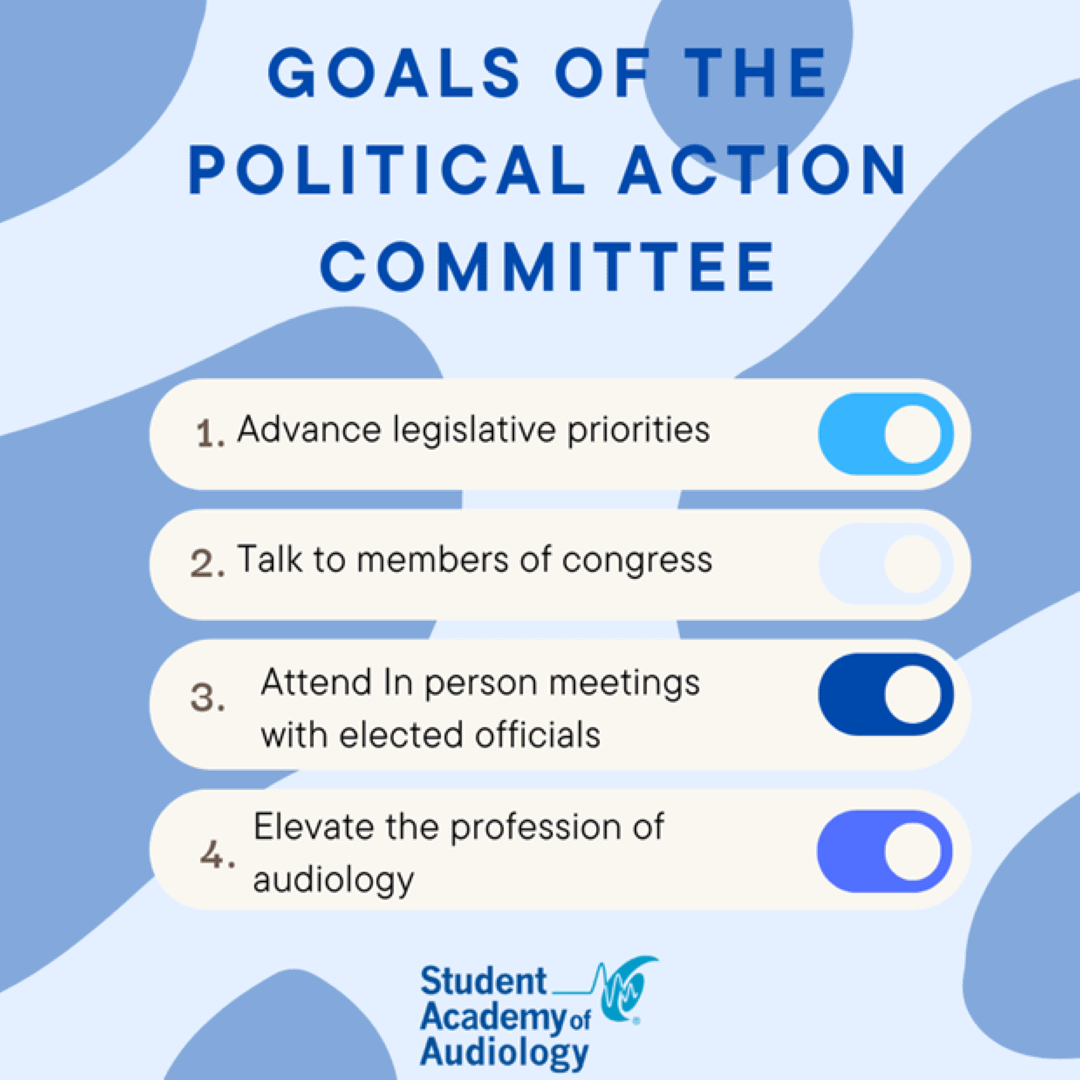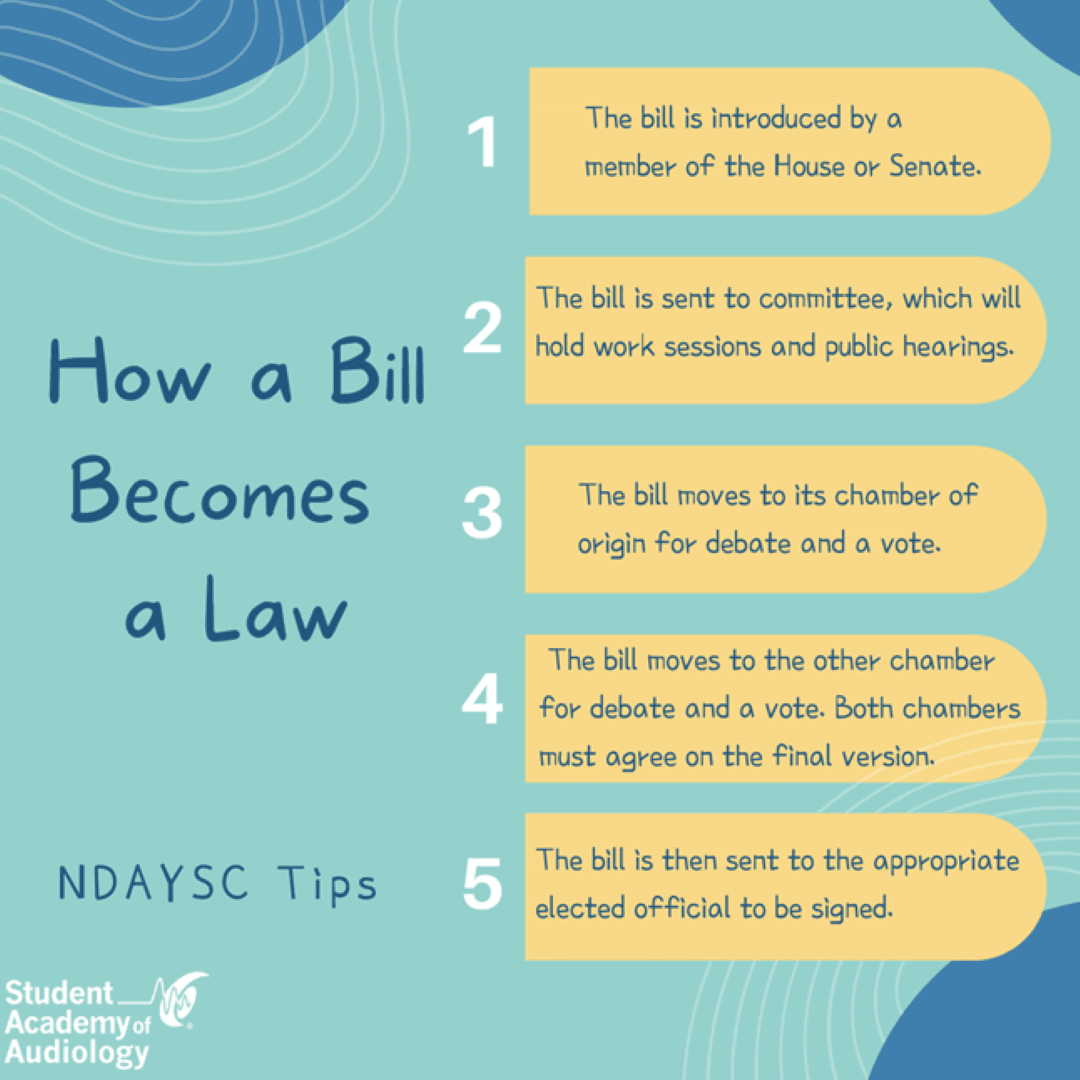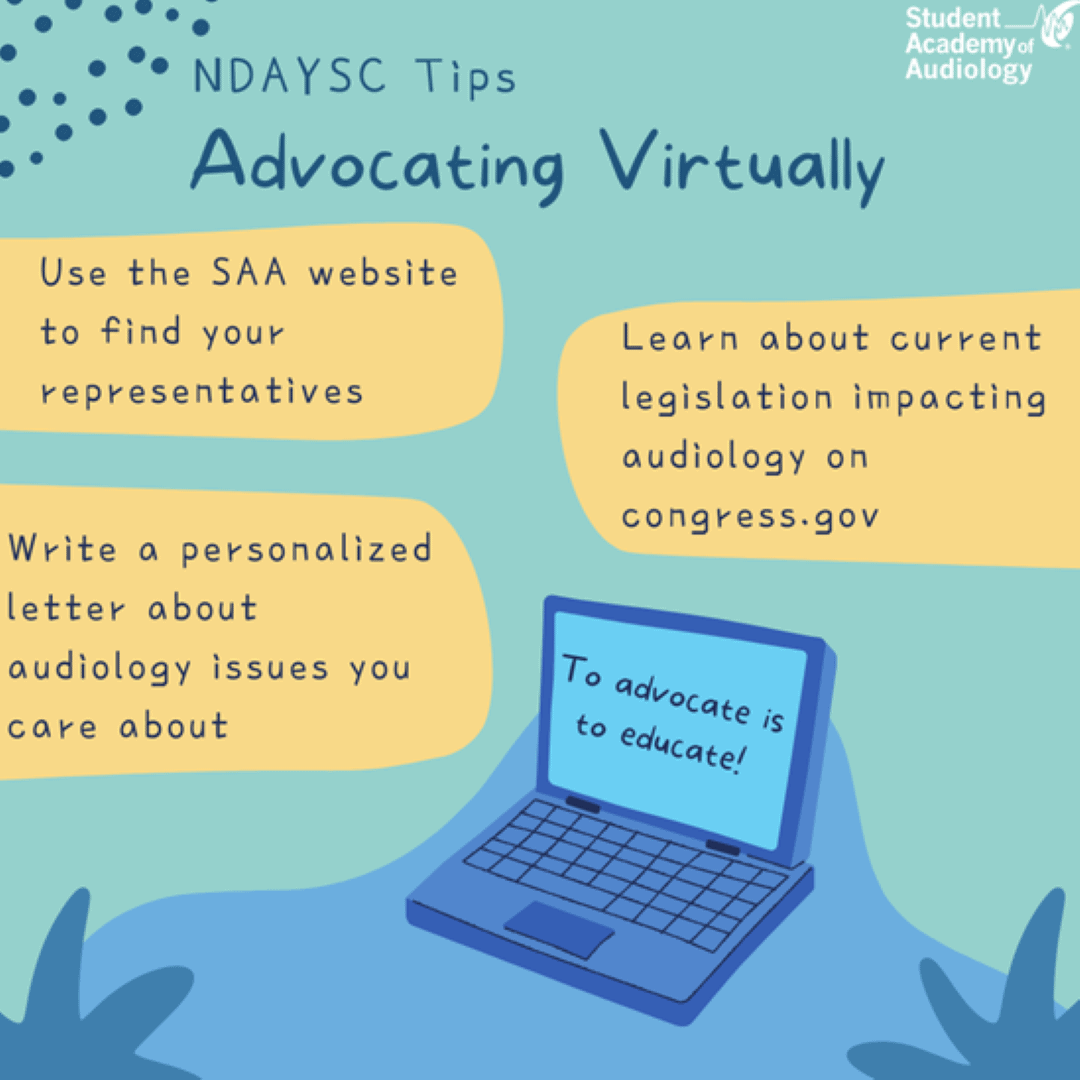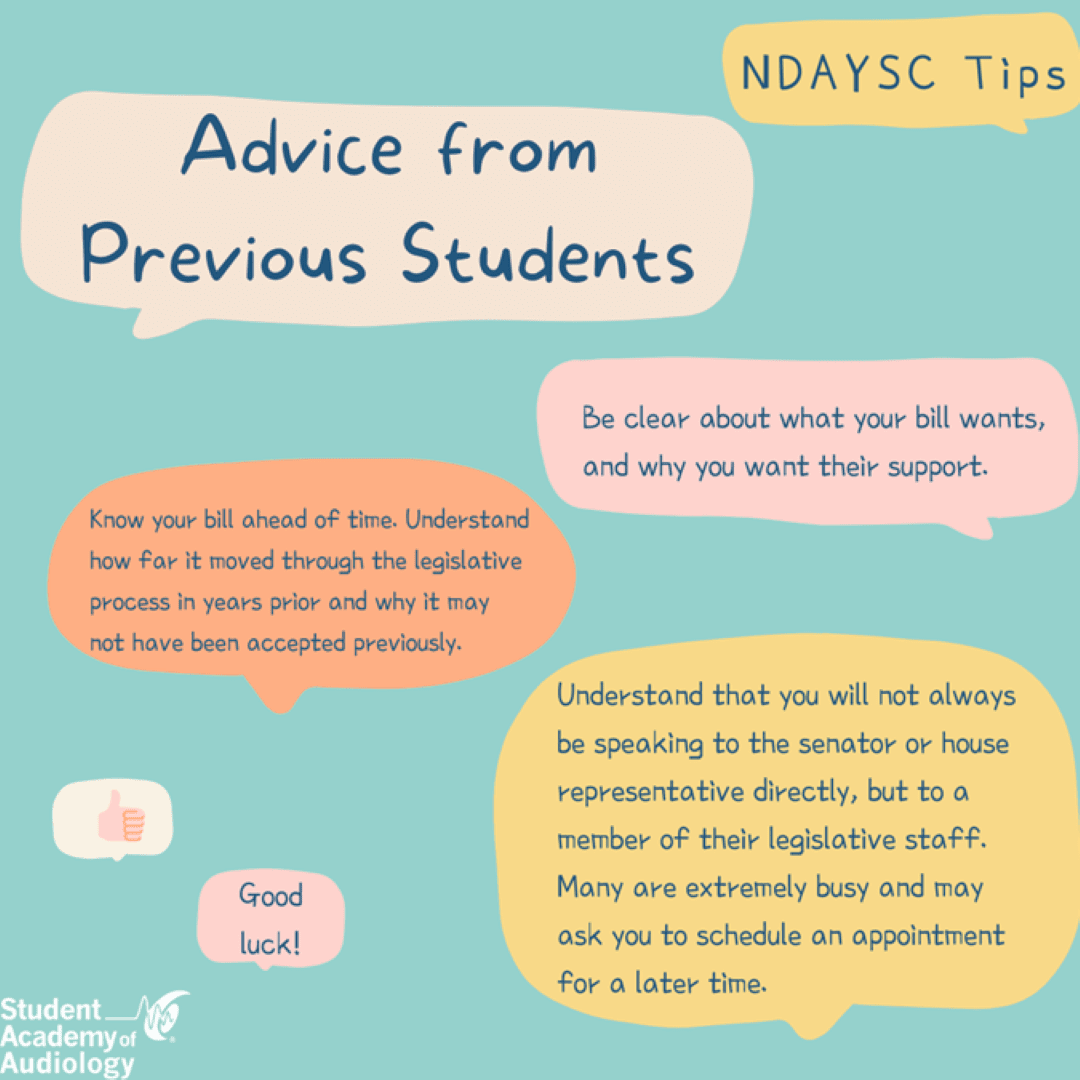The national SAA public outreach committee is challenging you to take advocacy to the next level in your own states and allow your voices to be heard where it matters most – upon the ears of your state’s legislators.
How can you get started, you ask? It’s easy! We’ve already done some of the work for you. First, you’ll need to find your state/nationally recognized SAA chapter on the NDAYSC Information Sheet. Listed next to your chapter name, you’ll find information on your state legislature’s session calendar, if you have an appointed lobbyist with the state academy, and who to contact to help you get started on your advocacy efforts. In most cases, contact can be made via email.
We highly encourage inter-chapter collaboration for this event. Not only will this make the likelihood of getting a reservation higher, but it will also strengthen the voice of the audiology community within that state. Plus, preparation work can be divided among the chapters involved. We hope you will consider inviting faculty members and professionals from your local community to join you as their professional experience and knowledge as licensed professionals adds weight to the conversation at hand as well.
Interested in collaborating with your state academy/organization? Please contact the national SAA public outreach committee chair, Bailey Harmon, with any interest, plans, or questions regarding NDAYSC. Send the name of your school, any past experiences with NDAYSC and any questions you may have.
What’s this about preparation work? It may be beneficial for you to put together information sheets to hand out to legislators or design posters or displays featuring pertinent information regarding a specific piece of legislation that is currently most impacting your state. You may also want to meet as a group to talk about the focus of conversations you’ll likely have with the legislators. Here are some ideas for resources you can use.
- Congress.gov provides up-to-date information about all legislation. Type “audiology” or the specific name of the bill you’re interested in learning more about into the search bar and it will provide a summary of each legislation, information about the legislation’s status, and even information about the likelihood of the legislation becoming public law.
- “Planning a Successful Lobby Day” provides some great ideas, particularly the timeline and checklist piece on pages 3 and 4. We are all educating those who represent us.
- Checkout the American Academy of Audiology website, specifically the Advocacy web page. There you can find up-to-date resources.
How a Bill Becomes a Law
- The bill is introduced by a member of the House or Senate.
- The bill is sent to committee, which will hold work sessions and public hearings.
- The bill moves to its chamber of origin for debate and a vote.
- The bill moves to the other chamber for debate and a vote. Both chambers must agree on the final version.
- The bill is then sent to the appropriate elected official to be signed.
Tips to Advocate Virtually
- Use SAA website to find your representatives.
- Write a personalized letter about audiology issues you care about.
- Learn about current legislation impacting audiology on congress.gov.
Advice from The Hill
- Find your Congress member’s staffer(s) who cover the specific policy area related to your bill of interest. Put together an information packet on the issue for these individuals.
- Have a succinct elevator pitch with concise resources/ information fused with emotional stories ready.
- Don’t go overboard with infographics/handouts and business cards.
- If you’re asking for anything that will cost money, have a tangible breakdown for cost estimates!
Advice from Previous Students
- Know your bill ahead of time. Understand how far it was moved through the legislative process in years prior and why it may not have been accepted previously.
- Be clear about what your bill wants, and why you want their support.
- Understand that you will not always be speaking to the senator or house representative directly, but to a member of their legislative staff. Many are extremely busy and may ask you to schedule an appointment for a later time.






